Does your front end feel vague or flex excessively when you really push it? That "noodle fork" sensation – steering wandering under hard cornering, brake shudder, or a general lack of precision – can be unnerving and slow you down. While some flex is inherent and even desirable for small bump compliance, excessive flex hurts control. Here's how to dial in more stiffness:
1. Increase Air Pressure (Air Forks Only): The simplest and most direct adjustment. Adding air pressure compresses the air spring more, requiring more force to initiate movement. This significantly increases the overall stiffness of the fork, especially resisting large impacts and big compressions that cause flex. Crucially: Stay within the manufacturer's recommended maximum pressure (usually printed on the fork leg). Exceeding it risks seal failure or even catastrophic damage. Start with 5-10 PSI increases, test ride, and repeat cautiously.
2. Add Volume Spacers (Air Forks Only): These small plastic tokens fit inside the air spring chamber. They reduce the air volume. Why does this help stiffness? With less volume, the air pressure ramps up much more aggressively deeper into the fork's travel. This primarily increases mid-to-end stroke support. While not directly stiffening the initial feel like pure pressure, it combats the deep dive that often feels like flex under heavy braking or big G-outs, making the fork feel more supportive and planted overall.
3. Adjust Compression Damping:
- Low-Speed Compression (LSC): Found on most mid-to-high-end forks. This controls the fork's resistance to slow, deliberate movements like braking, cornering, and pedaling forces. Increasing LSC adds significant resistance to these forces, directly combating brake dive and the flex/wander feeling during hard cornering. Turn the dial clockwise (usually) a click or two at a time and test.
- High-Speed Compression (HSC): Less common, controls resistance to sharp, fast impacts (rocks, roots). While primarily for tuning big-hit harshness, a slight increase might offer a subtle perception of firmness, but focus on LSC first for stiffness related to steering inputs.
4. Increase Oil Viscosity (Advanced): Fork oil lubricates and dampens. Thicker oil (higher viscosity, e.g., going from 5wt to 7.5wt or 10wt) creates more resistance inside the damper. This makes the damper cartridge stiffer, particularly the compression circuit, requiring more force to move the fork quickly. This is an advanced modification. Research your specific fork model thoroughly – using oil that's too thick can damage internals, make the fork harsh, and void warranties. Best done during a full service.
5. Service Your Fork: Worn bushings, contaminated oil, or degraded seals introduce slop and reduce the fork's ability to move smoothly in its intended path. This often manifests as play or a vague, "sticky" flex feeling. A full lower leg service (replacing oil, seals, and bushings if needed) restores the fork's tightness and responsiveness, eliminating unwanted movement that feels like flex.

Important Considerations:
- Trial & Error: Stiffness preferences are personal. Make one change at a time and test thoroughly on familiar terrain.
- Trade-offs: Increasing stiffness almost always reduces small-bump sensitivity and plushness. Find the right balance for your riding style and terrain.
- Fork Limits: Every fork has a design stiffness. Aggressive riders on lightweight XC forks will hit limits faster than someone on a burly enduro fork. If you've maxed out adjustments and servicing, a stiffer chassis might be the ultimate solution.
- Headset Check: Ensure your headset is properly preloaded. A loose headset feels like fork flex!
By methodically working through these adjustments – starting with air pressure/volume and compression damping – you can significantly reduce unwanted flex and gain the precise, confident front end your aggressive riding demands.
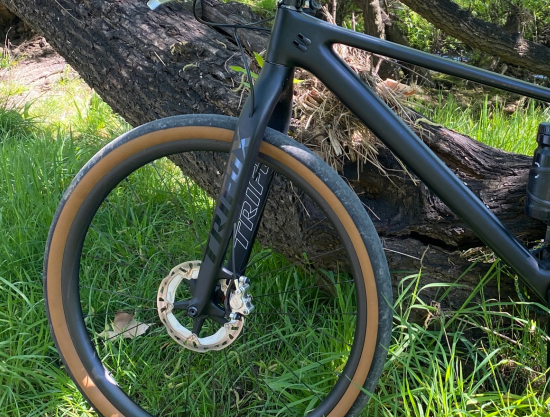
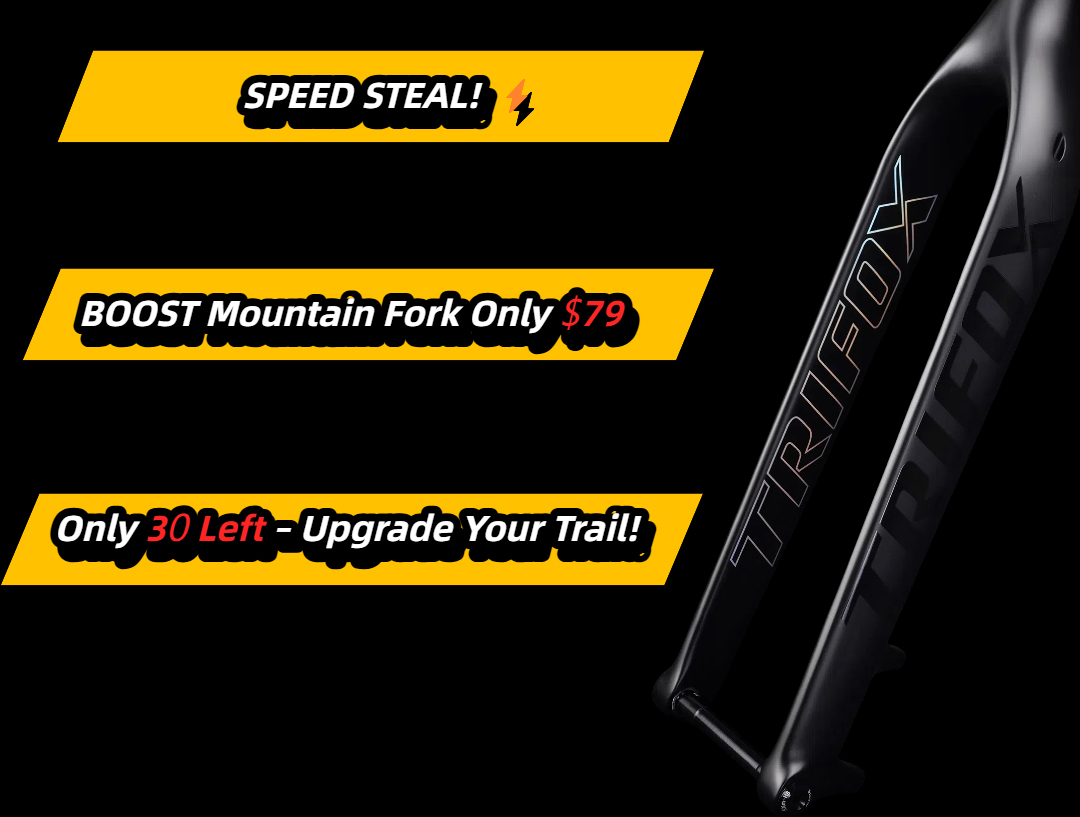
For mountain bikers, a carbon fork is a game-changer—offering lightweight performance, vibration-damping comfort, and razor-sharp steering precision. But high costs often put these upgrades out of reach… until now.
Carbon fiber’s magic lies in its blend of strength and featherlight weight. Unlike alloy forks, carbon absorbs trail chatter, reducing arm fatigue on rough terrain while maintaining stiffness for confident handling. Perfect for cross-country riders, commuters, or gravel adventurers seeking speed and comfort.
What Makes the Trifox Fork a Steal?
- Boost Spacing: Compatible with modern 29” MTB wheels (110x15mm axle), this fork ensures better tire clearance and stiffness for aggressive riding.
- Disc Brake Ready: Designed for flat-mount disc brakes, it delivers reliable stopping power in all conditions.
- Tapered Steerer: Enhances steering precision and durability, fitting most contemporary bike frames.
- Rigid Design: Ditch the weight and maintenance of suspension forks—ideal for riders prioritizing efficiency over rough terrain.
Who Should Upgrade?
- Budget-Conscious MTBers: Replace a heavy stock fork or upgrade an older hardtail without splurging.
- Gravel & Commuter Riders: Add carbon’s comfort to mixed-surface adventures or daily rides.
- DIY Builders: A cost-effective cornerstone for building a lightweight, high-performance rig.
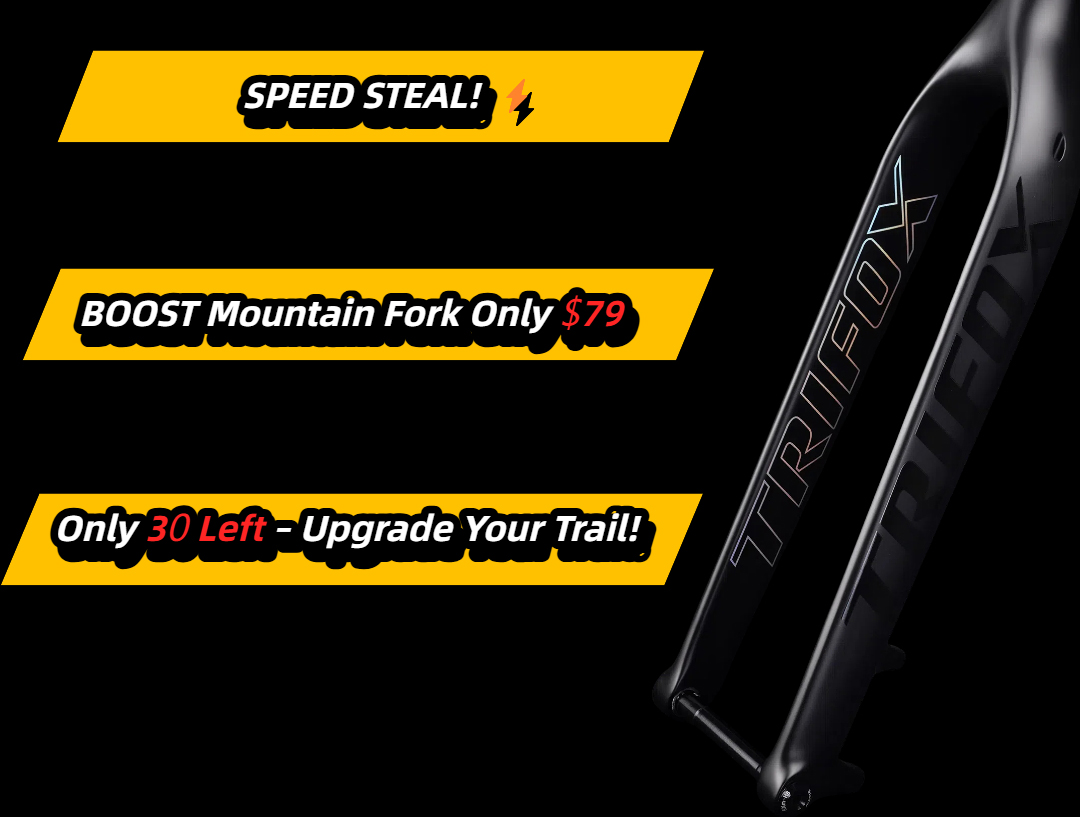
Carbon forks at this price point are rare—and Trifox’s offering delivers core benefits without cutting corners. Whether you’re chasing PRs on singletrack or smoothing out city streets, this fork proves premium upgrades don’t have to break the bank.

As mountain biking technology evolves, riders demand forks that balance lightweight agility with unshakable stiffness and control. Enter the Trifox TMK200 29er Carbon Rigid Fork—a standout contender for 2025's top Boost-compatible forks. Designed for riders who prioritize precision and durability, this fork redefines performance on rugged trails. Here’s why it’s a must-have upgrade for your MTB setup.
1. Boost Spacing: The Stiffness Revolution
The TMK200 embraces 148x12mm Boost hub spacing, a standard that’s become non-negotiable for modern MTBs. By widening the hub flange distance, Boost spacing increases wheel stiffness, reducing flex during hard cornering or high-load descents. This translates to sharper steering response and better power transfer, especially on technical terrain. Paired with a rigid carbon construction, the TMK200 eliminates energy-sucking flex, letting you tackle rock gardens and drop-offs with confidence.
2. Carbon Fiber Mastery
Crafted from high-modulus T800 carbon fiber, the TMK200 sheds weight without sacrificing strength. At roughly 450g, it’s significantly lighter than aluminum counterparts, yet stiffer laterally to prevent brake shudder and steering wander. Carbon’s natural vibration-damping properties also absorb trail chatter, reducing hand fatigue on long rides. Whether you’re racing XC or bikepacking, this fork ensures every watt of effort goes forward.
3. Tapered Steerer for Precision Handling
The 1.5” to 1.125” tapered steerer tube reinforces the fork’s crown junction, a critical stress point. This design enhances torsional rigidity, ensuring your handlebar inputs translate instantly to the front wheel. No more sluggish steering or “dead” feel—just razor-sharp control, whether you’re threading through tight singletrack or navigating rooty climbs.
4. Disc Brake Dominance
The TMK200 is built for modern flat-mount disc brakes, offering cleaner integration and superior stopping power. Its reinforced carbon legs handle heat dissipation efficiently, preventing brake fade on prolonged descents. The fork’s rigidity also minimizes brake-induced flex, maintaining consistent rotor alignment for reliable modulation in all conditions.
5. Future-Proof Versatility
Compatible with both 29er and 27.5+ wheels (up to 3.0” tires), the TMK200 adapts to your riding style. Its minimalist design supports minimalist builds—ideal for gravel riders or rigid MTB purists—while the internal cable routing option keeps your setup sleek. Plus, the Boost standard ensures compatibility with the latest hubs and wheelsets, protecting your investment as components evolve.
Why the Trifox TMK200 Stands Out in 2025
While suspension forks dominate headlines, rigid options like the TMK200 are gaining traction for their simplicity and direct trail feedback. Riders seeking a “connected” feel will appreciate its uncompromising stiffness, while weight-conscious racers benefit from its pared-down design. Add in corrosion resistance and a stealthy matte finish, and you’ve got a fork that’s as durable as it is performance-driven.
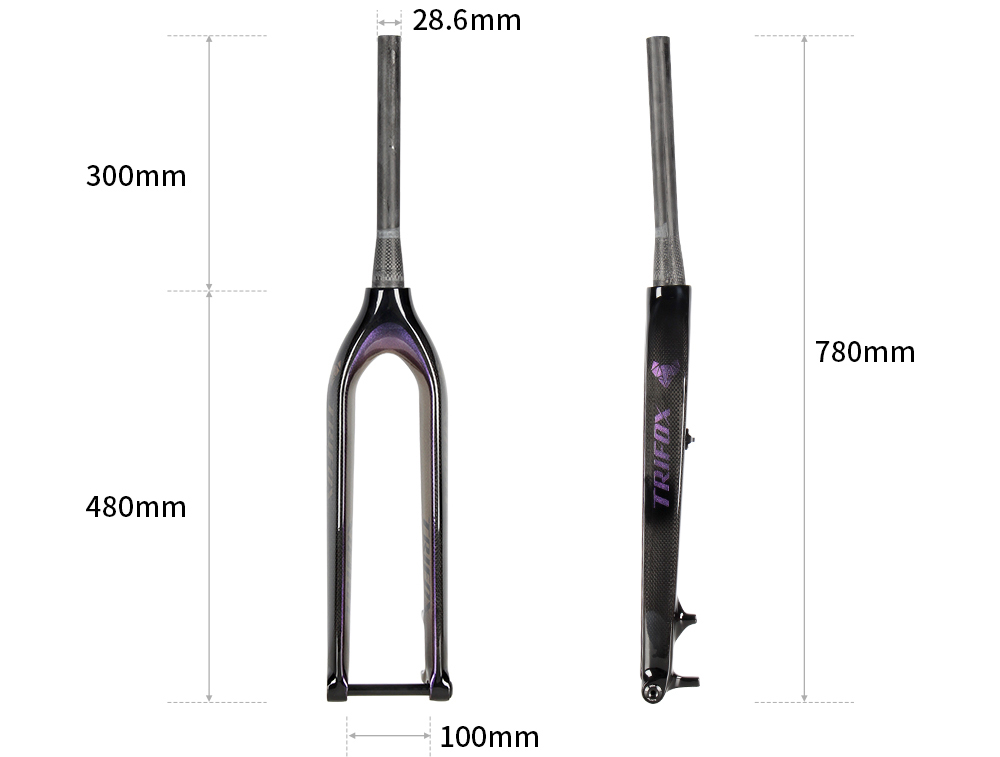
Upgrading your bike’s fork can transform its handling, weight, and performance. But before swapping parts, it’s crucial to know: not every fork fits every bike. Compatibility hinges on specific standards, and ignoring them can lead to costly mistakes. Let’s break down what matters—and how rigid forks like Trifoxbike’s Carbon Rigid Forks fit into the equation.
Key Factors in Fork Compatibility
1. Axle Standards:
Forks are designed for specific axle types (e.g., QR, thru-axle). A 15x100mm thru-axle fork won’t fit a QR hub without adapters—if at all.
2. Steerer Tube Diameter & Length:
Most road bikes use 1⅛” steerers, while MTBs may use tapered (1.5” to 1⅛”). Measure your headset’s specs before buying.
3. Brake Compatibility:
Disc brake forks require mounts (Post Mount or IS); rim brake forks need caliper bosses. Mixing systems rarely works.
4. Wheel Size:
A 29” MTB fork won’t suit a 27.5” wheel, and road forks are built for 700c. Always match the fork to your wheel diameter.
5. Suspension vs. Rigid:
Suspension forks add complexity (travel, crown height). Rigid forks, like Trifoxbike’s carbon options, simplify compatibility but demand precise geometry.
Why Rigid Forks Are a Safe(ish) Bet
Rigid forks eliminate suspension-related variables, making them easier to fit—if axle, steerer, and brake standards align. For example, Trifoxbike’s Carbon Rigid Forks come in multiple configurations (QR/thru-axle, disc/rim brake) to suit gravel, MTB, or hybrid builds. Their lightweight carbon design also reduces weight while maintaining stiffness, ideal for riders prioritizing efficiency over suspension.
When to Consider a Rigid Fork
- Weight Savings: Carbon rigid forks can cut 1–2 lbs vs. suspension.
- Simplified Maintenance: No seals or stanchions to service.
- Compatibility Control: Easier to match axle/brake standards.
The Exceptions
Even rigid forks aren't universal. A cyclocross fork might lack clearance for MTB tires, and a road fork’s rake (offset) could destabilize a gravel bike. Always cross-check:
- Tire Clearance: Does the fork fit your tire width?
- Rake/Offset: Affects handling; match your bike's original specs.
Final Tips
1. Measure twice: Confirm steerer diameter, axle type, and brake mounts.
2. Prioritize purpose: Use MTB forks for MTBs, road forks for road bikes.
3. Check geometry: A fork's axle-to-crown length impacts ride height and steering.
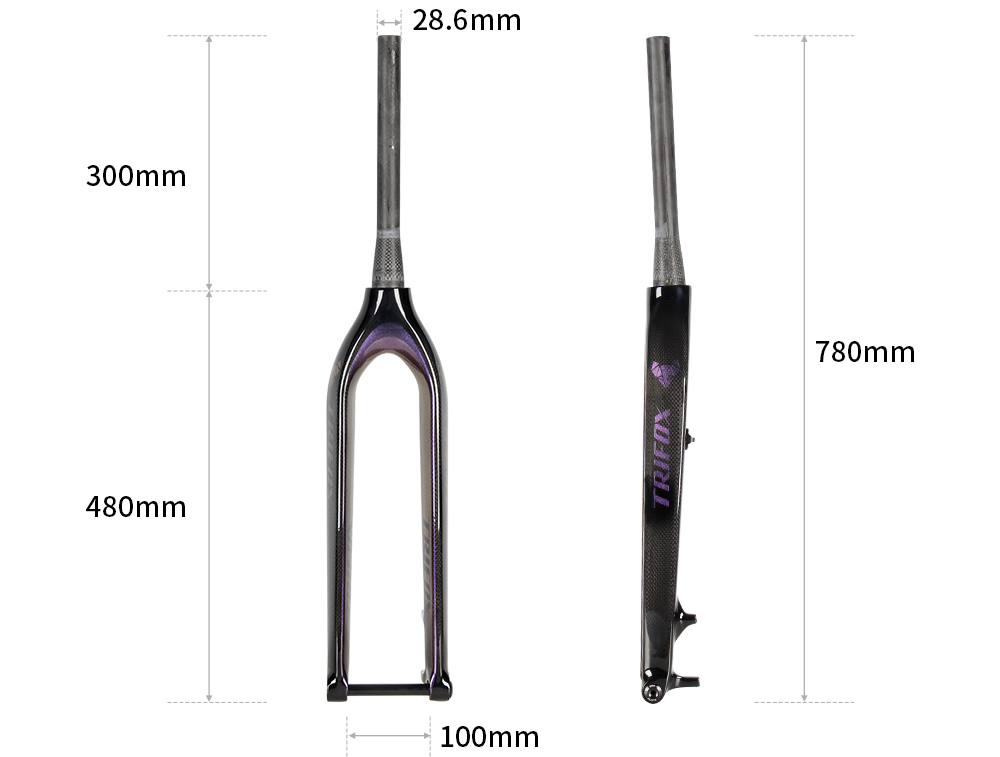
The Bottom Line
While no fork fits every bike, rigid options like Trifoxbike’s carbon models simplify compatibility with versatile standards. Pair them with precise measurements, and you’ll unlock a lighter, nimbler ride—without the headache of mismatched parts.
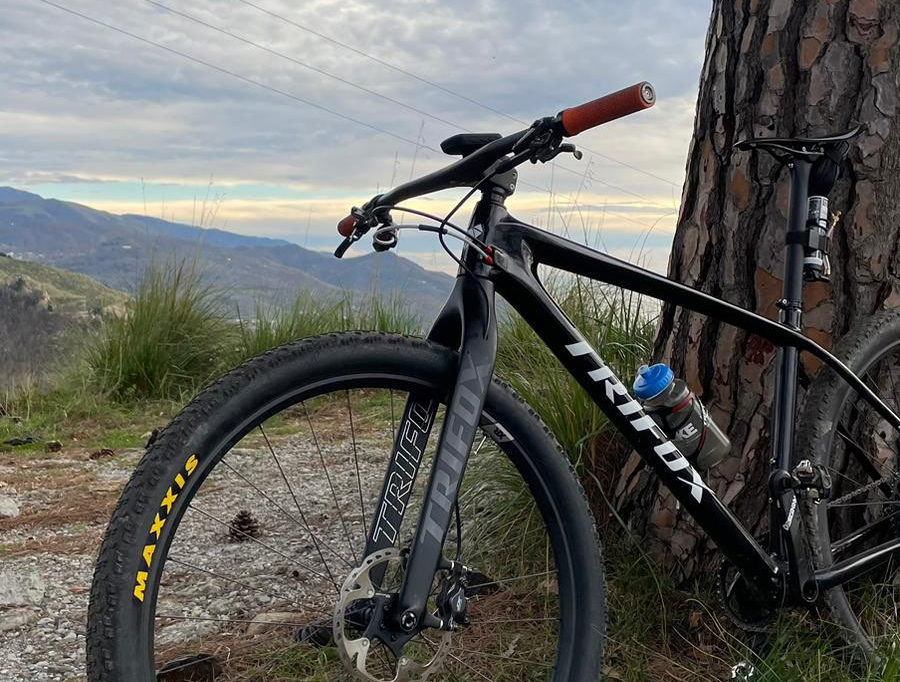
In the world of mountain biking, agility reigns supreme. Whether carving through singletrack or tackling technical descents, responsiveness and control define your ride.
The secret to unlocking next-level off-road performance lies in two innovations: an ultralight carbon MTB frame and a Boost fork. Together, they create a synergy that elevates speed, precision, and confidence on any trail.
Ultralight Carbon Frame: The Backbone of Speed
Carbon fiber's magic lies in its strength-to-weight ratio. Trifox’s SDY20 frame exemplifies this, shedding grams without sacrificing durability. A lighter bike accelerates faster, climbs easier, and flicks through tight turns effortlessly. Carbon’s natural vibration damping also enhances comfort, reducing fatigue on long rides. But the real win is stiffness—optimal torsional rigidity ensures every watt of power translates to forward motion, while compliant seatstays absorb trail chatter for better traction.
Boost Fork: Precision Meets Stability
The Boost standard (110mm front axle spacing) isn’t just a buzzword—it’s a game-changer. Wider hub spacing increases wheel stiffness, preventing flex during hard cornering or rock strikes. This means sharper steering response and unwavering control in loose terrain. Paired with a lightweight carbon frame, the Boost fork ensures your front wheel tracks true, boosting confidence on steep descents and technical climbs.
The Dynamic Duo
Combine the SDY20's featherlight frame with a Boost fork, and agility reaches new heights. The frame's nimble character complements the fork’s stability, creating a bike that’s both quick and composed. Tight switchbacks? Effortless. Rocky descents? Unshakable. This pairing reduces rider fatigue, letting you push harder for longer.
For riders seeking an edge, Trifox’s SDY20 merges cutting-edge materials and smart engineering. It's not just about weight or stiffness—it’s how these elements harmonize to redefine off-road agility.

Choosing the right mountain bike fork can make or break your ride. With so many options—rigid, suspension, air-sprung, coil-sprung—it’s easy to feel overwhelmed. But don’t worry! We’re breaking down the most common MTB fork types and how they align with different riding styles.
1. Rigid Forks: Simplicity Meets Lightweight
Rigid forks (no suspension) are ultralight and low-maintenance, ideal for smooth trails, gravel paths, or bikepacking where weight savings matter most. They’re perfect for cross-country purists or riders prioritizing efficiency over comfort. However, they lack shock absorption, making them less suitable for technical terrain.
2. Hardtail Suspension Forks: Versatility on a Budget
Hardtail forks (front suspension only) strike a balance between efficiency and control. Air-sprung models (like Trifox’s carbon suspension forks) are lightweight and adjustable, ideal for trail riding or XC racing. Coil-sprung forks, while heavier, offer plush performance for all-day endurance rides.
3. Full Suspension Forks: Conquer the Gnar
Paired with a rear shock, full suspension forks soak up bumps on aggressive descents. Look for forks with 150–180mm of travel for enduro or downhill riding. Features like adjustable damping and lockouts (available in premium models) let you switch between climbing efficiency and downhill stability.
4. Hybrid Forks: The Best of Both Worlds?
Some forks blend air and coil springs for tunable performance. These hybrids cater to all-mountain riders who tackle mixed terrain. They’re adaptable but often come at a higher price point.
Key Considerations
Travel: Match fork travel to your terrain (80–120mm for XC, 130–150mm for trail, 150mm+ for enduro/downhill).
Weight: Carbon forks (like Trifox’s) reduce weight without sacrificing strength—critical for climbing.
Axle Standards: Boost spacing (110x15mm) improves stiffness and tire clearance.
Budget: High-end forks offer adjustability, but mid-range models can still deliver great performance.
Why Carbon Forks?
Carbon fiber forks, such as those from Trifox Bike, combine durability with vibration damping—key for long rides. They're also corrosion-resistant and excel in stiffness-to-weight ratios, making them a favorite among competitive riders.
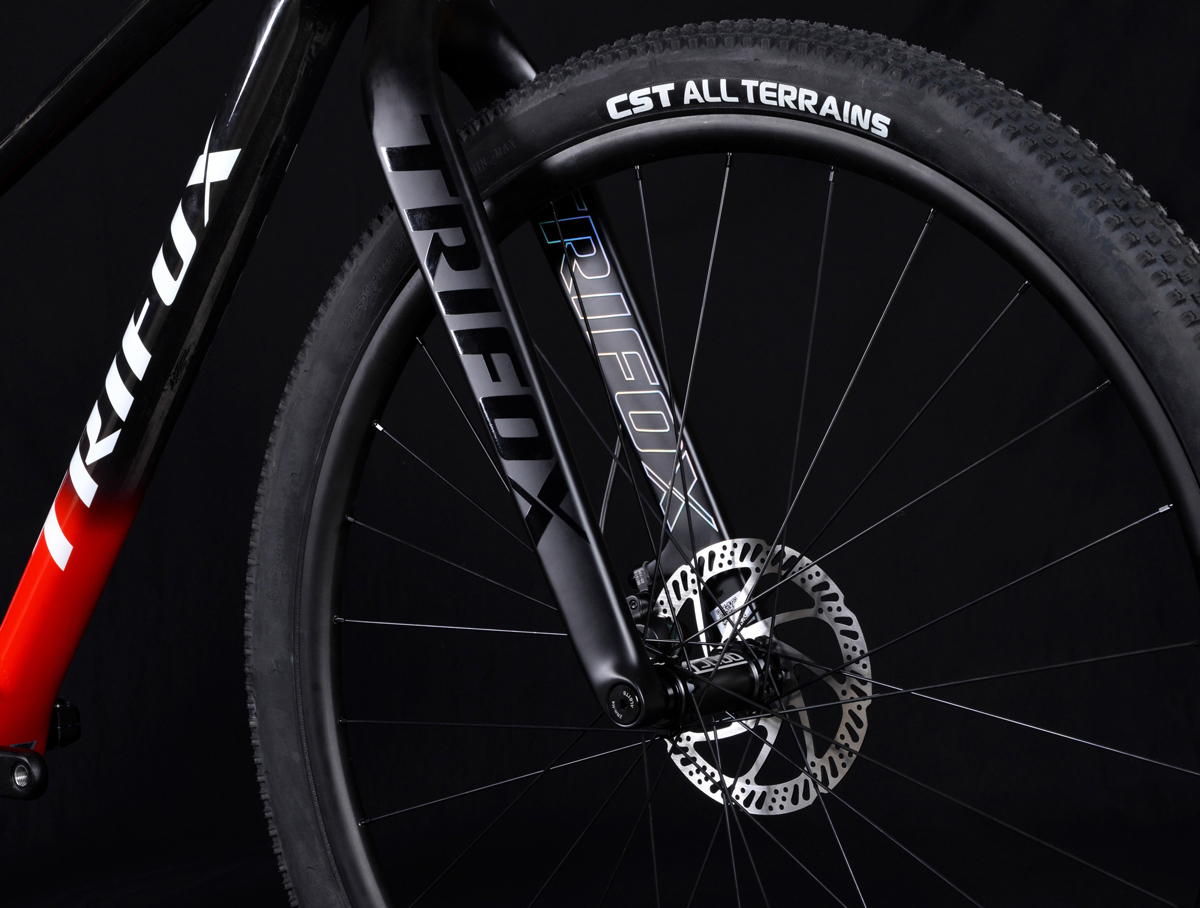
Your fork choice depends on where and how you ride. For XC racers, a lightweight air-sprung carbon fork is ideal. Trail riders benefit from adjustable 120–140mm travel, while enduro shredders need burly 150mm+ forks. Check out Trifox Bike’s carbon forks to find a high-performance option tailored to your style.

When upgrading or building your mountain bike, one of the key decisions you’ll face is whether to go with a Boost or non-Boost chainring. This choice can significantly impact your bike’s performance, compatibility, and overall ride quality. But what exactly is the difference, and how do you know which one is right for you? Let’s break it down.
Understanding Boost vs. Non-Boost
The term “Boost” refers to a newer standard in mountain bike design that widens the hub spacing—from 142mm to 148mm in the rear and from 100mm to 110mm in the front. This wider spacing allows for stiffer wheels, better tire clearance, and improved chainline alignment. As a result, Boost-compatible chainrings are designed to work with this updated spacing, ensuring optimal performance and shifting precision.
Non-Boost chainrings, on the other hand, are designed for traditional hub spacing. While they’re still widely used and compatible with older bikes, they may not offer the same level of stiffness and tire clearance as Boost setups.
Which One Do You Need?
The answer depends on your bike’s specifications. If you’re riding a modern mountain bike with Boost spacing, you’ll need a Boost chainring to maintain proper chainline and shifting performance. However, if your bike uses traditional spacing, a non-Boost chainring is the way to go.
It's also worth considering your future plans. If you’re upgrading other components, like your fork (check out Trifox Bike’s rigid forks at TrifoxBike.com), opting for Boost compatibility can future-proof your setup and unlock additional benefits like improved wheel stiffness and tire options.
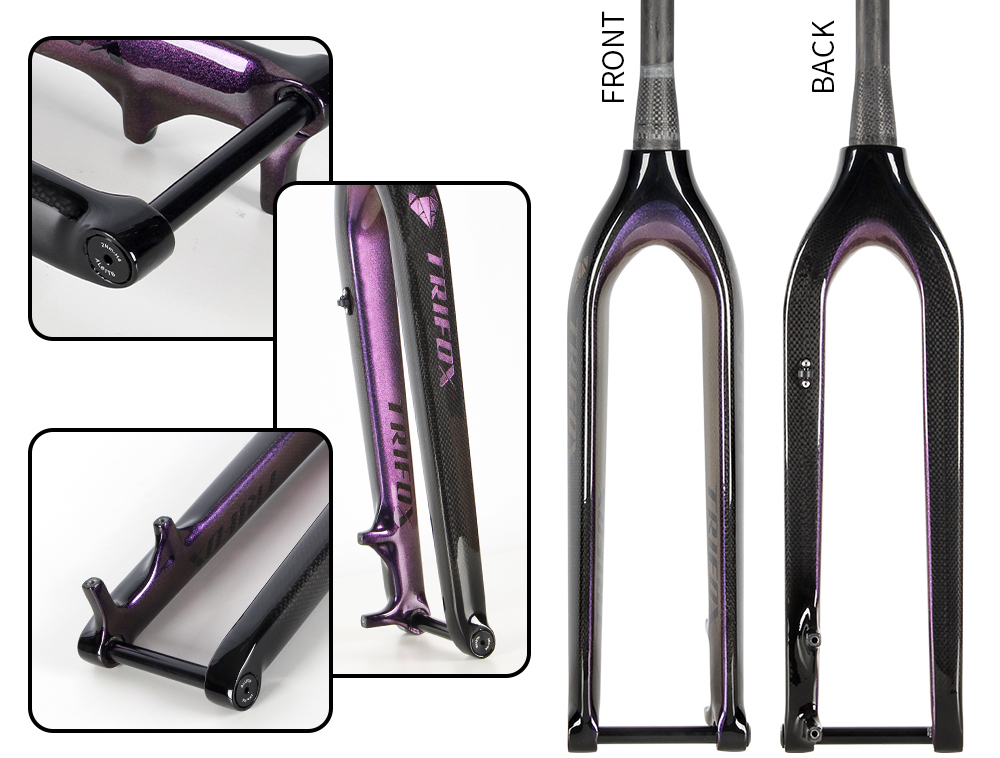
Choosing between Boost and non-Boost chainrings ultimately comes down to your bike’s specifications and your riding goals. If you’re unsure, consult your bike’s manual or a trusted mechanic. And if you’re in the market for high-quality components, Trifox Bike offers a range of options to suit your needs. Whether you’re sticking with non-Boost or embracing the Boost revolution, the right chainring will keep your ride smooth and efficient.
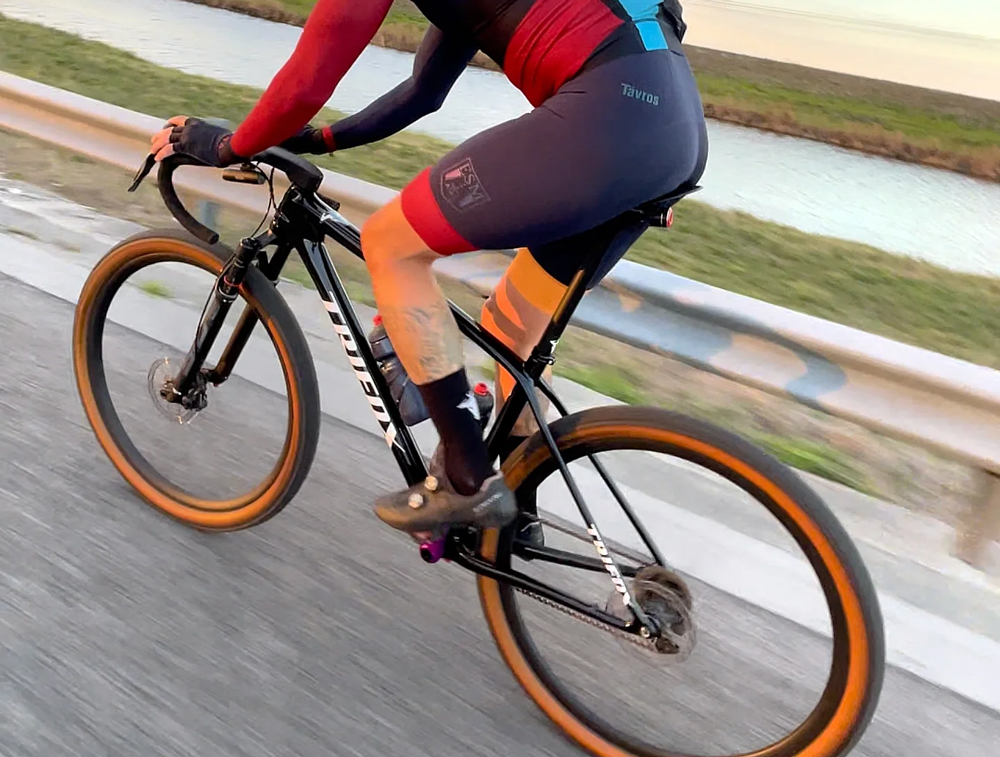
If you've been shopping for a new bike or upgrading your current one, you’ve likely come across the term “Boost” – especially when it comes to forks. But what exactly is Boost, and why does it matter? Let’s break it down.
What is Boost?
Boost is a modern standard for mountain bike hubs, axles, and forks that was introduced to improve bike performance and durability. Specifically, Boost refers to a wider hub spacing compared to traditional standards. For forks, this means a **110mm x 15mm thru-axle** spacing (up from the older 100mm x 15mm standard). This extra width provides several key benefits for riders.
Why Boost Matters
Boost is a modern standard for mountain bike hubs, axles, and forks that was introduced to improve bike performance and durability. Specifically, Boost refers to a wider hub spacing compared to traditional standards. For forks, this means a **110mm x 15mm thru-axle** spacing (up from the older 100mm x 15mm standard). This extra width provides several key benefits for riders.
Why Boost Matters
1. Increased Stiffness and Strength: The wider hub spacing creates a stiffer wheel and fork interface, improving handling and control, especially on rough terrain.
2. Better Tire Clearance: Boost allows for wider tires and better clearance, giving you more options for tackling different trails.
3. Improved Chainline: The wider spacing optimizes the chainline, which enhances shifting performance and reduces wear on drivetrain components.
Is Boost Right for You?
Boost has become the industry standard for most modern mountain bikes, from cross-country to downhill. If you’re upgrading your fork or building a new bike, Boost is likely the way to go. However, if you’re working with an older bike or components, compatibility might be a concern. Always check your frame and hub specifications before making the switch.
Boost vs. Non-Boost
While Boost offers clear advantages, non-Boost systems are still functional and widely used. The choice ultimately depends on your riding style, bike setup, and future upgrade plans.
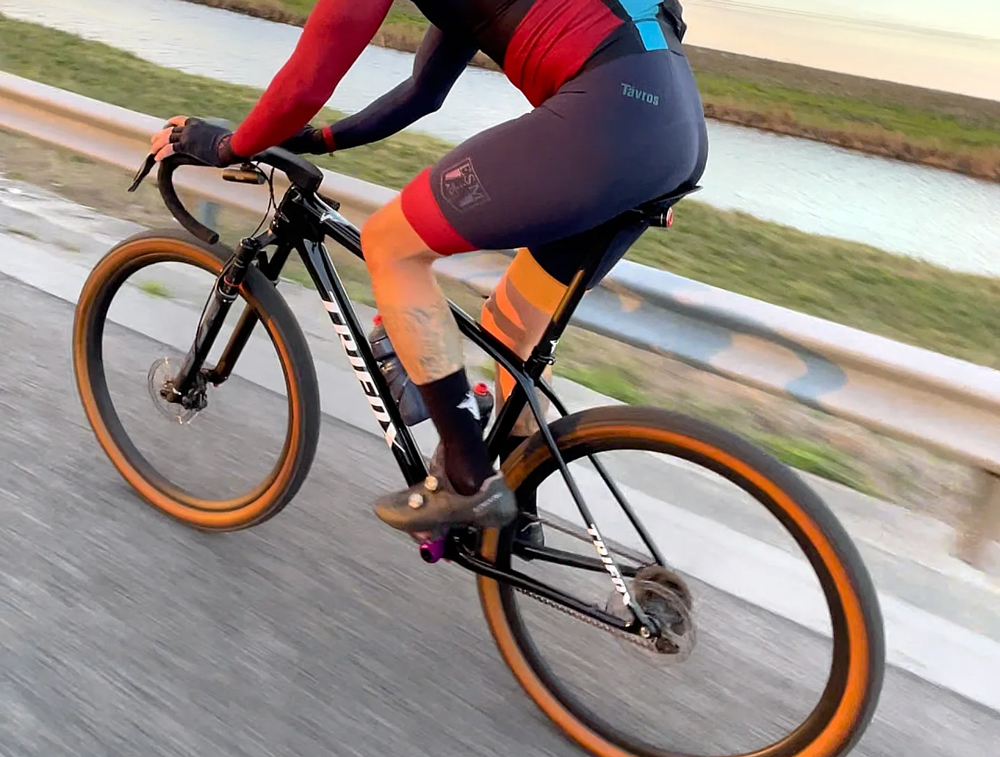
Boost on a fork isn't just a buzzword – it’s a game-changer for modern mountain biking. With improved stiffness, better tire clearance, and enhanced performance, it’s no wonder Boost has become the go-to standard for riders worldwide.
Whether you're a seasoned pro or a weekend warrior, understanding Boost can help you make smarter decisions about your bike setup. Ready to boost your ride?
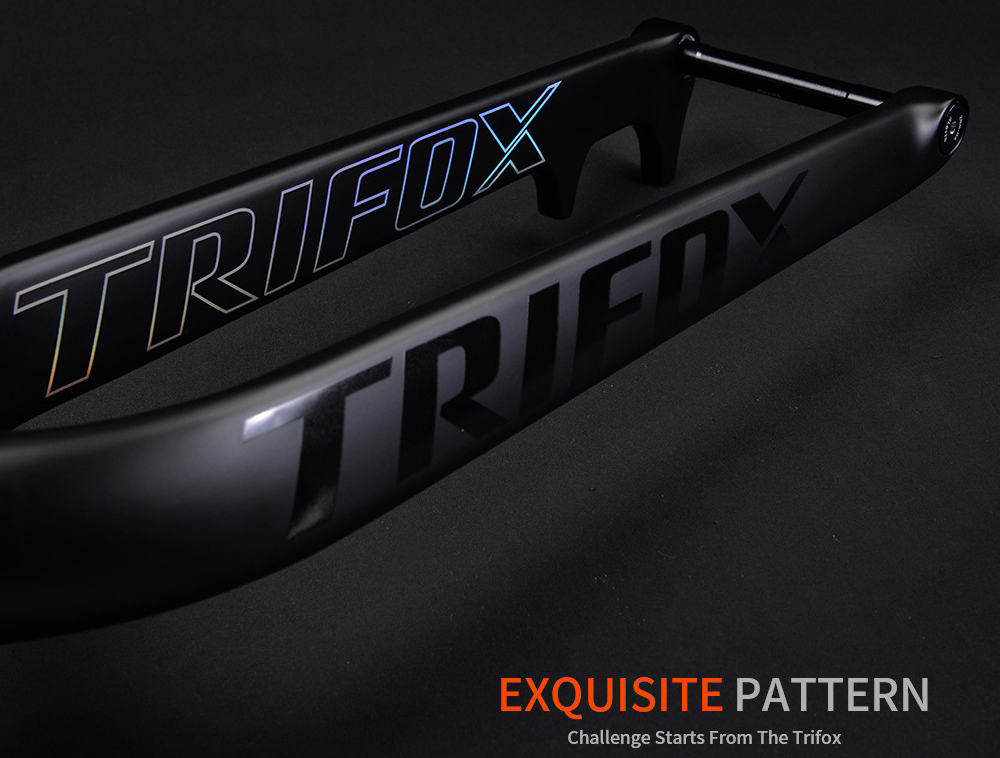
When it comes to mountain biking, trail riders are always looking for the latest gear that can enhance their performance and improve their ride quality. One such game-changer is the Boost MTB Fork, a component that’s quickly gaining traction among trail riders for its ability to offer superior stability, control, and overall ride quality. Specifically, the Trifox 29er Disc Brake Tapered Carbon MTB Rigid Fork (TMK200) has redefined the way riders experience technical trails.
Enhanced Stability and Control
The Boost MTB fork features an increased hub spacing of 110mm, compared to traditional forks that typically use a 100mm spacing. This wider stance improves wheel stiffness and creates a more stable front end, which translates to better control on rocky, uneven terrain. For riders navigating tricky sections of a trail, this added stability means a smoother, more controlled ride, allowing you to power through obstacles with confidence.
Superior Strength with Lightweight Carbon Fiber
The Trifox TMK200 is crafted from high-quality carbon fiber, a material known for its exceptional strength-to-weight ratio. This allows the fork to provide the durability needed for tough trail conditions, while keeping the overall weight low. The result is a robust fork that won’t weigh you down, helping you maintain speed and agility on the trails.
Improved Handling and Ride Quality
The Boost MTB fork also helps improve the handling and responsiveness of your bike. With better axle alignment and an optimized fork design, the TMK200 offers more precise steering and less flex, so you can ride with greater confidence and efficiency. Whether you're tackling technical descents or navigating tight corners, this fork helps you stay in control and ride faster.
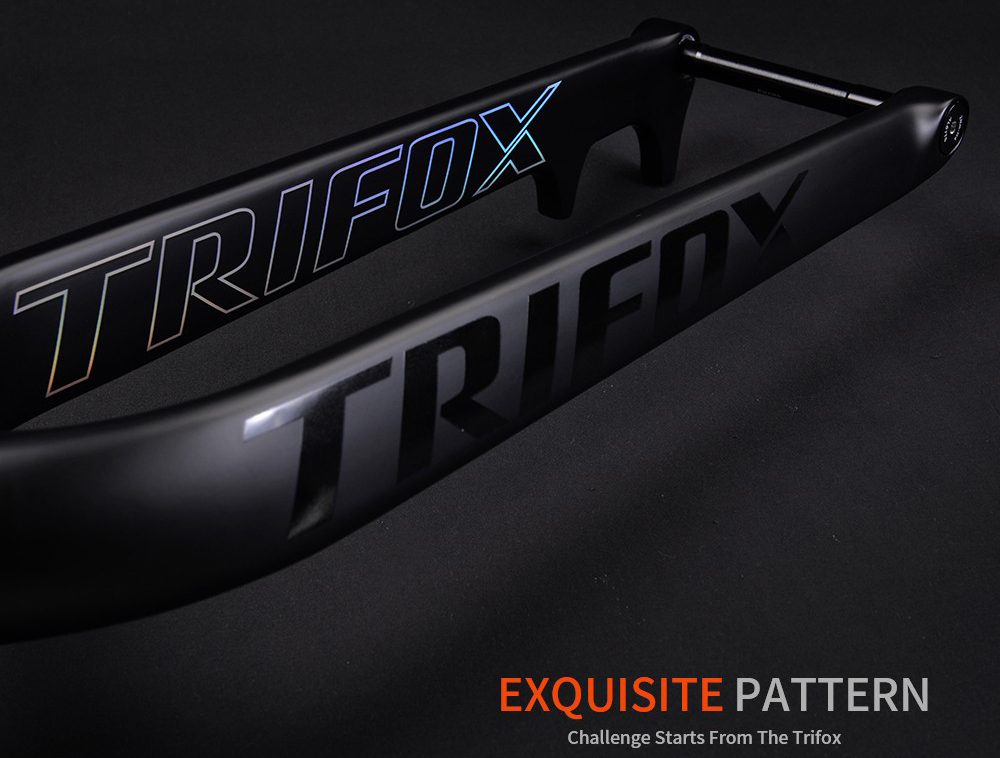
For trail riders looking to elevate their performance, the Boost MTB Fork is truly a game-changer, offering superior stability, strength, and handling.
























































